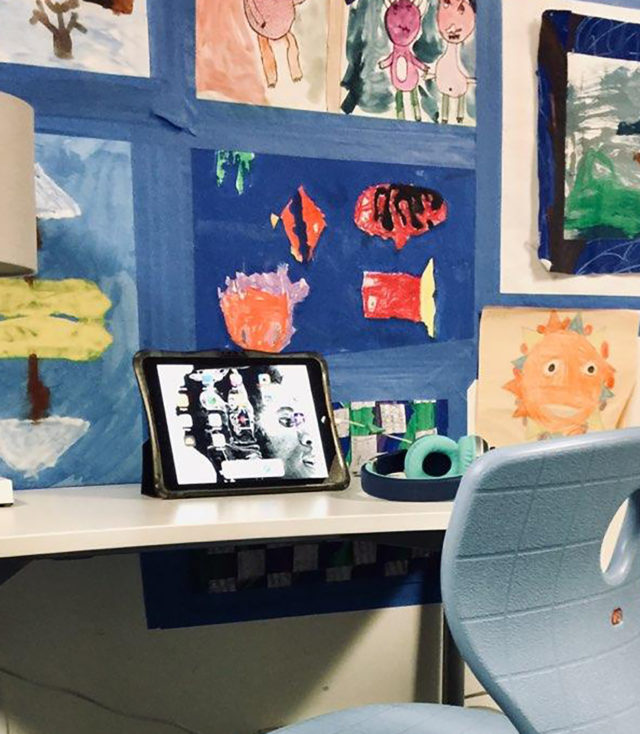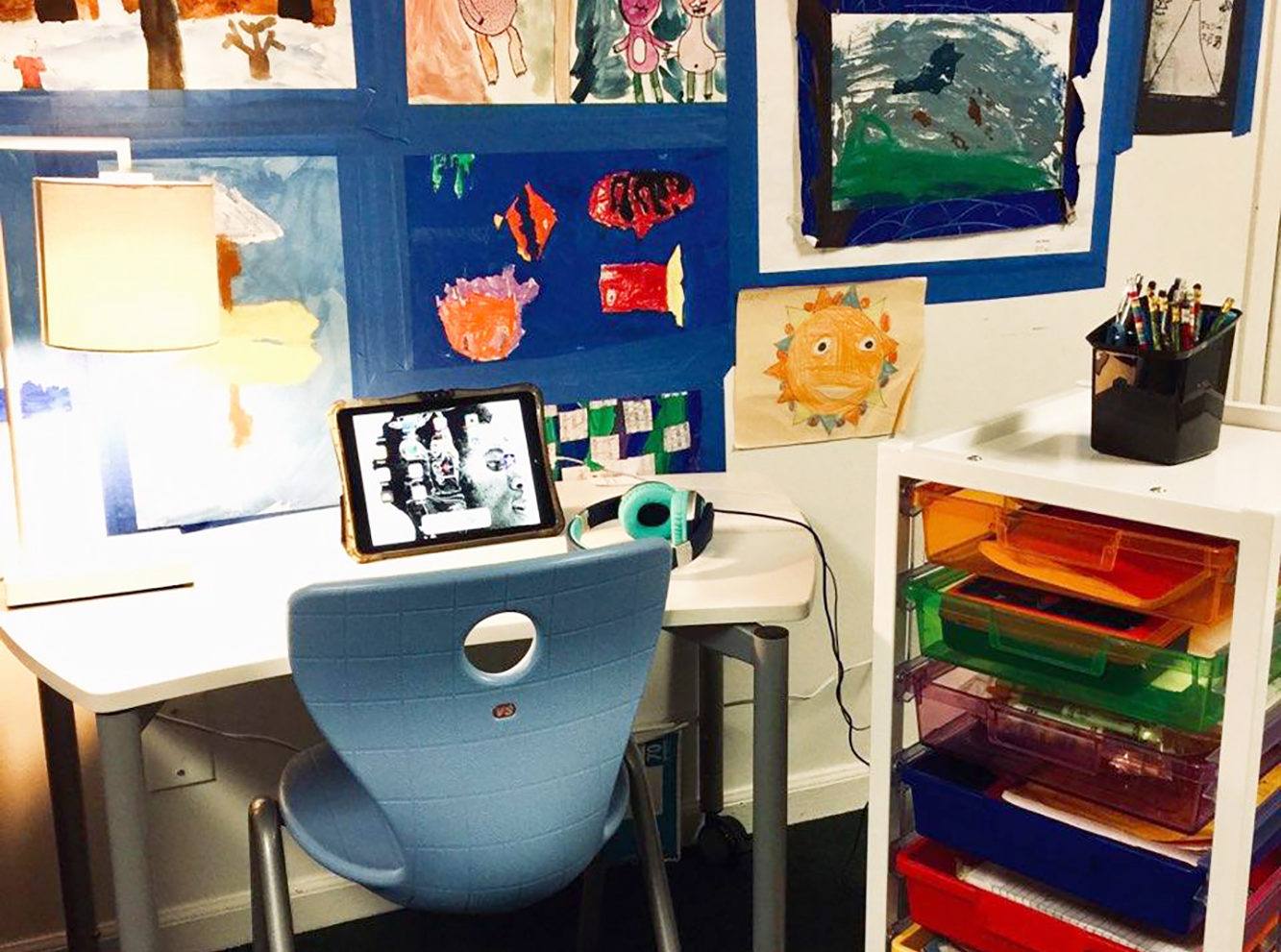Insights
How to Make Your Home a Smarter Place for Learning
By Brandon Biniker
At Fanning Howey, we have dedicated our lives to designing smarter places for learning. In unprecedented times such as this, those spaces have shifted from schools to our homes.
Our team members are used to working remotely and working from home. But now that our children are e-learning, we are turning our home offices into learning environments. How do you strike a balance between a productive workspace and a great place for education?
Based on our design expertise and our recent experiences, here are some simple ways you can make your home a smarter place for learning.
Create Designated Learning Spaces
Start by giving your learners their own space. Try setting up a workstation at home reflective of the brick and mortar building environment your children are accustomed to. My family took school projects that our kids brought home and hung them up all over the wall in front of their own desk and chair to provide some inspiration.
When they are in this space they’re seeing much of the same things that they would at school. Small reading lamp. Headphones. iPads and reading and writing materials. Creating that familiarity can help students develop the sense of place that is often emphasized in our school designs.

Get Your Kids Involved
Let them decide how they want that space to look and feel. Involving them in the process helps them have ownership of the space which positively impacts their drive to work and learn in that space. If it is a place that feels good to them, they will feel good learning there.
For older children, their bedroom is a great and comfortable place to learn. For younger children who need more attention set up their learning environment in a high-traffic area within your home. This is especially true if you need to spread your attention among multiple younger kids. A kitchen table is a great place to help your kindergartner learn while wrangling a toddler.
Balance Creativity and Structure
It is possible to embrace the chaos while maintaining some structure to your day to day. Provide structure with a regular schedule that meets your children’s educational needs. Create opportunities to have fun with learning outside of their required schoolwork.
Here are some of our favorite activities so far:
- Creating a stop-motion Lego movie
- Planting trees
- Putting on a puppet show
- Family game night

Don’t Forget to Create Balance for Yourself
If you are new to remote working, your first instinct might be to set up in a dark far away corner or closed-off home office. Instead, try to avoid further isolation and find an inspiring spot with some natural light. Take time to get outside and enjoy some sunshine.
Use this as a learning opportunity for your kids to learn about what you do. If you can, make time to do your work in an open spot in the home so your children can observe your work style. Create fun projects for them to learn about what you do at work. Give yourself a schedule that meets your work needs while balancing the needs of your family.
And above all, be prepared to shift. Smarter places for learning are all about flexibility. Bring that same mindset into your house. If your environment or schedule isn’t working, then try something else. Be agile, be patient and try to enjoy what is sure to be a unique experience.
Resources:
Smart Schools Roundtable: May Session Ohio
ByFor the May session of Fanning Howey’s Smart Schools Roundtable, we heard from two separate speakers for Indiana and Ohio. For Ohio, education consultant Paul Pendleton spoke about the future of Ohio schools in a
Full ArticleSmart Schools Roundtable: May Session Indiana
ByFor the May session of Fanning Howey’s Smart Schools Roundtable, we heard from two separate speakers for Indiana and Ohio. For Indiana, Barnes and Thornburg Partner Jeff Qualkinbush returned to discuss the Indiana legislative session
Full ArticleSmart Schools Roundtable: HVAC Indoor Air Quality
ByFor the April session of Fanning Howey’s Smart Schools Roundtable, we heard from ASHRAE Distinguished Lecturer David Schurk on how HVAC systems can improve and maintain indoor air quality to promote healthy learning environments. David
Full Article